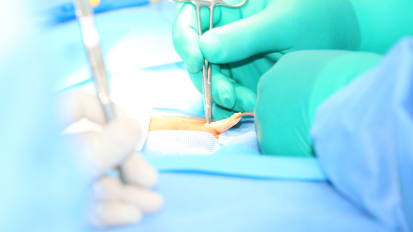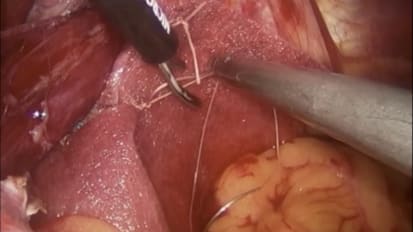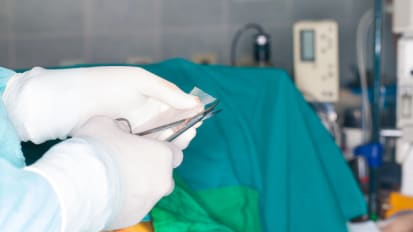
 Video
Video
Retromuscular hernia repair using GORE® SYNECOR Preperitoneal Biomaterial with transfascial suture fixation
John P. Fischer, M.D., MPH, FACS, is a specialist in abdominal wall reconstruction. This is a surgical technique video demonstrating the retromuscular repair using GORE® SYNECOR Preperitoneal Biomaterial with transfascial fixation. Video
Video
GORE® BIO-A® Web Technology Innovation
Learn more about the GORE® BIO-A® Video
Video
Robotic TAR and Incisional Hernia Repair with GORE® SYNECOR Preperitoneal Biomaterial
Rodolfo J. Oviedo, MD, FACS, FASMBS, narrates on a robotic transversus abdominis release (TAR) and incisional hernia repair. Document
Document
Learn More About GORE® SYNECOR Biomaterials
Hybrid hernia repair device for high BMIs, multiple comorbidities and recurrent defects are now available.Optimising Biliary Stenting: Reducing Migrations and Reinterventions
This evening of clinical discussion is designed for experienced gastroenterologists and interventional radiologists, and will focus on how to optimise treatments of biliary strictures, specifically reducing complications and optimising hospital costs. Video
Video
Paraesophageal Hernia Repair Using
GORE® BIO-A® Tissue Reinforcement
 Document
Document
Biosynthetics — Know your options
"[Biologic] materials come with only moderate durability, and at substantial financial cost. Slowly absorbable biosynthetic implants, as a class of hernia meshes, represent a possible cost-effective solution. In the final analysis." Document
Document
A Cost Comparison of Mesh Usage in Laparoscopic Paraesophageal Hernia Repair
The aim of this study was to compare costs of the GORE® BIO-A® Device, ALLERGAN ALLODERM Device, and ALLERGAN STRATTICE Device in relation to the outcomes in terms of length of stay and recurrence rate following PEH repair. Document
Document
Comparison of laparoscopic sleeve gastrectomy leak rates in four staple-line reinforcement options: A systematic review
The study compared laparoscopic sleeve gastrectomy (LSG) staple-line leak rates of 4 prevalent surgical options: No reinforcement, oversewing, nonabsorbable bovine pericardial strips (BPS) and absorbable polymer membrane (APM). Video
Video
A Value Case Study Featuring GORE® BIO-A® Tissue Reinforcement for Hernia Repair
Learn how a US Midwestern medical center saved $340,000 with no change in quality outcomes* over 12 months when they switched to GORE® BIO-A® Tissue Reinforcement for complex hernia repairs. Learn why GORE® BIO-A® Tissue Reinforcement has proven outcomes and reduced costs for complex hernia repairs. Document
Document
Clinical Use of GORE® BIO-A® Tissue Reinforcement in Ventral Hernia Repair Using the Components Separation Technique
Many repaired incisional or ventral hernias recur; thus, the primary objective of research and technological developments pertaining to these hernias has long been to minimize recurrences without increasing treatment-related complications. Document
Document
Expert Review: Clinical experience with GORE® SYNECOR Intraperitoneal Biomaterial
A surgeon reviewing their clinical experience with GORE® SYNECOR Intraperitoneal Biomaterial and MEDTRONIC PARIETEX Composite Mesh for Umbilical / Epigastric Hernias.